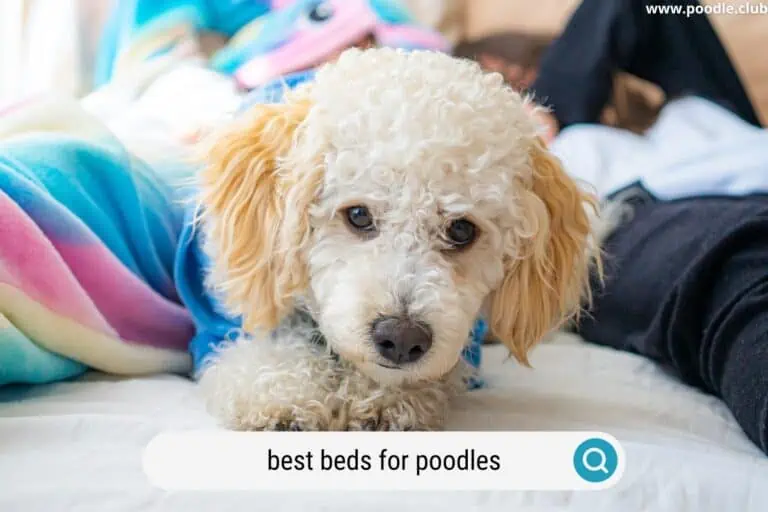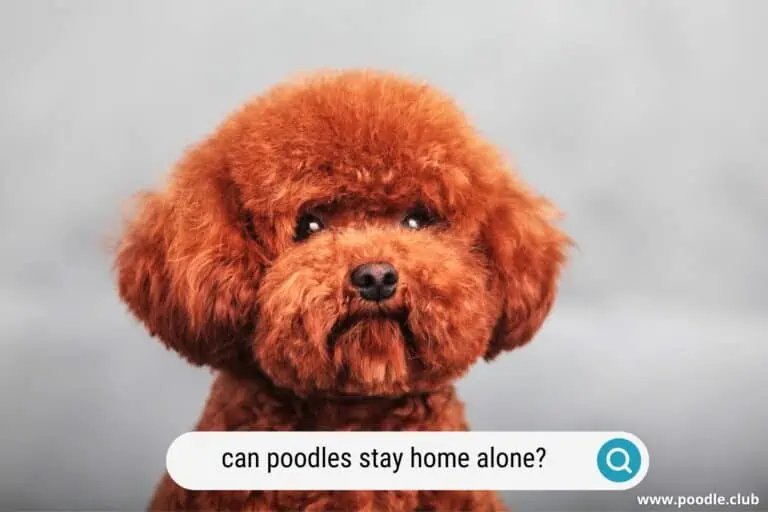How to Crate Train a Poodle Puppy (steps)
As with the differences in opinion among parents raising human babies, dog owners are often vocal about how they feel about keeping their pet in a crate. However, the data doesn’t lie—crate training Poodles can help them feel secure, reduce anxiety, and control bowel movements.
So, if you’re ready to learn how to crate train a Poodle puppy, you’re in luck. I’ve successfully been through this process myself and will share my top tips to help your four-footed best friend adjust to their crate.
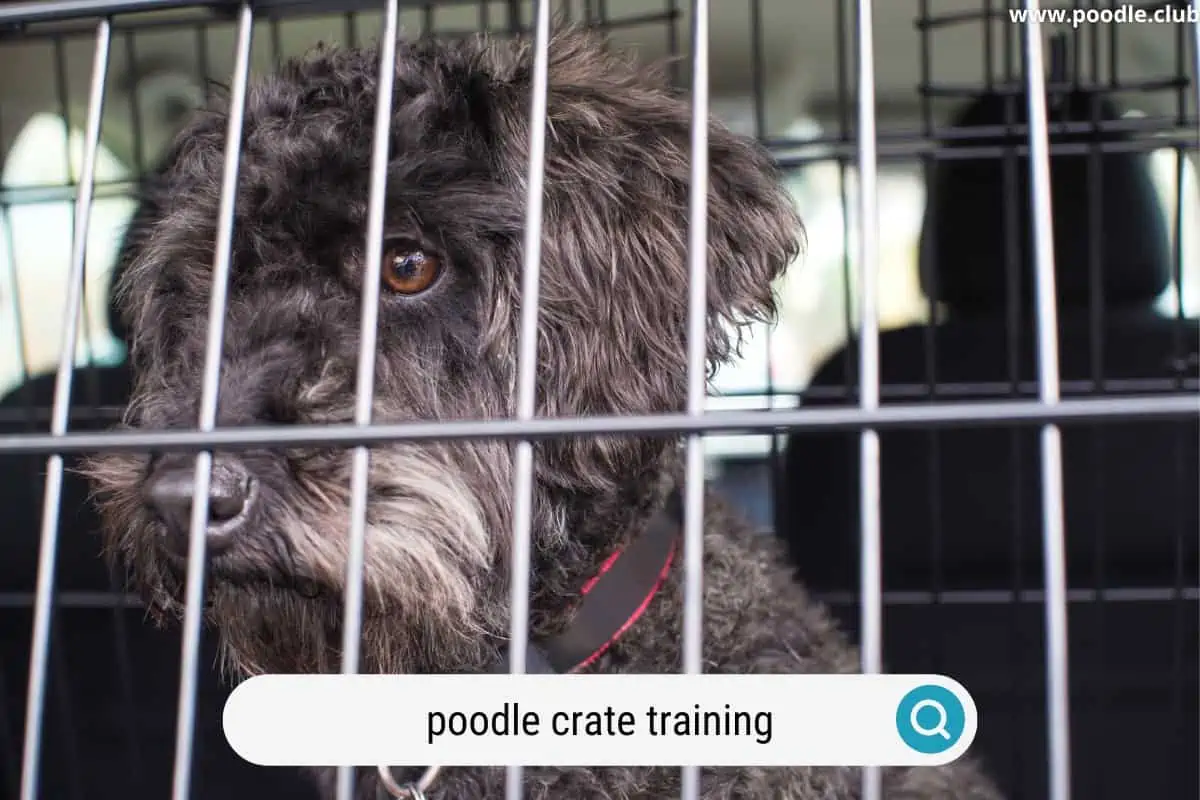
How Long Does It Take To Crate Train a Poodle Puppy?
Because Poodles have a higher-than-average level of intelligence, it’s possible to crate train them in as little as four weeks. Nevertheless, it could take as long as four months for your puppy to get the hang of crate life. So, don’t worry if they have slow progress.
Your consistency as an owner and how inviting you make the crate also play a significant role in how well your Poodle will take to crate training.
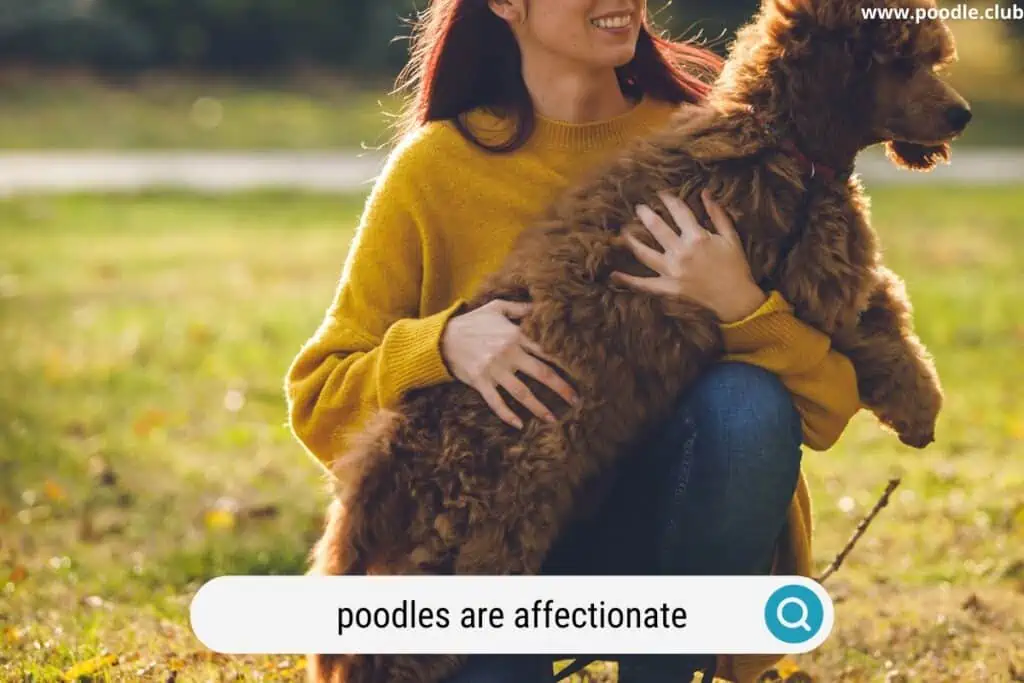
6 Steps for Crate Training Your Poodle Puppy
Without further ado, below are the steps you’ll need to follow to offer your Poodle puppy a positive crate training experience.
Step 1: Select an Appropriately Sized Crate
Poodles come in three sizes, and each one requires approximately the following crate dimensions:
- Standard Poodle: 36 – 42 inches tall
- Miniature Poodle: 21 inches tall
- Toy Poodle: 19 inches tall
If you have an even smaller-sized crate to start with, that’s ideal, given that your Poodle puppy will be less likely to defecate in their crate if they have a smaller space.
PuppySpot is a reputable dog marketplace where you can browse and find compatible puppies right from the comfort of your home. They have placed over 200,000 puppies into homes in the US!
But if you’re on a budget, you should choose a crate size for the anticipated height of your adult Poodle that will offer them enough room to comfortably stand and turn around without so much space that they can designate a potty area while sleeping away from it.
Step 2: Make the Crate Comfortable
Although a plush bed is naturally a seemingly comfortable choice from a dog owner’s perspective, Poodles will commonly choose hard surfaces to lay on. So, if you already struggle with your puppy chewing on their bed, consider using the crate’s mat or towels as their bedding.
Furthermore, you should always keep a bowl in their crate topped up with water and some of their favorite toys or chew bones.
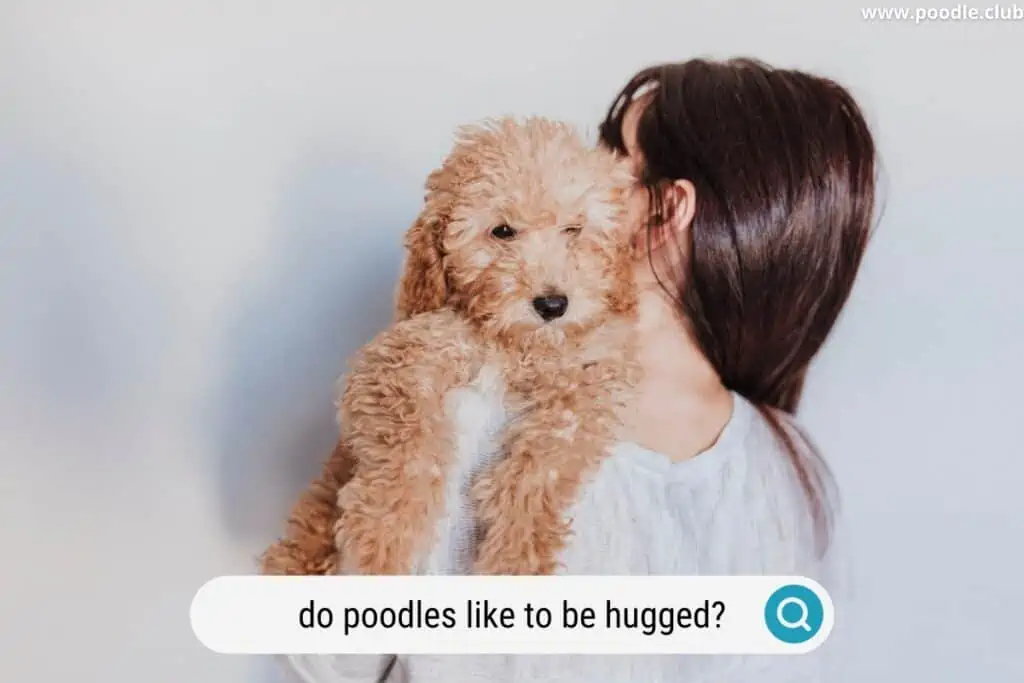
Step 3: Put Your Puppy in the Crate When They’re Tired
Choosing a time when your puppy is in a relaxed state is ideal for starting to crate train them. That’s because if they’re in a playful mood or if it’s shortly before dinner time, they’ll likely resist the crate and whine.
But if you put them in their crate after they’re exhausted from a round of tug-o-war or when their bellies are full from eating, they’ll be more willing to settle into a nap in their crate.
Step 4: Reward Them With a Treat
Your poodle Puppy is much more likely to jump paws first into their crate if they know they’re going to get a treat. So, try choosing a special treat that they can look forward to and associate strictly with their crate.
One of my favorite options is a toy that you can hide treats or some peanut butter. Not only does this serve as a reward for your poodle Puppy for going into their crate, but it also is a longer-term distraction to keep them from getting anxious as they adapt to the confined space.
Step 5: Let Your Puppy Explore the Crate
When you start crate training your puppy Poodle, it isn’t wise to shut the door after giving them a treat, especially if your Poodle suffers from anxiety. Instead, leave the door open so they can go in and out of the crate at their leisure.
That offers them the freedom to choose their crate and all the comforts in it without them feeling like they don’t have a choice. Before long, you’ll likely notice your puppy choosing the crate on their own.
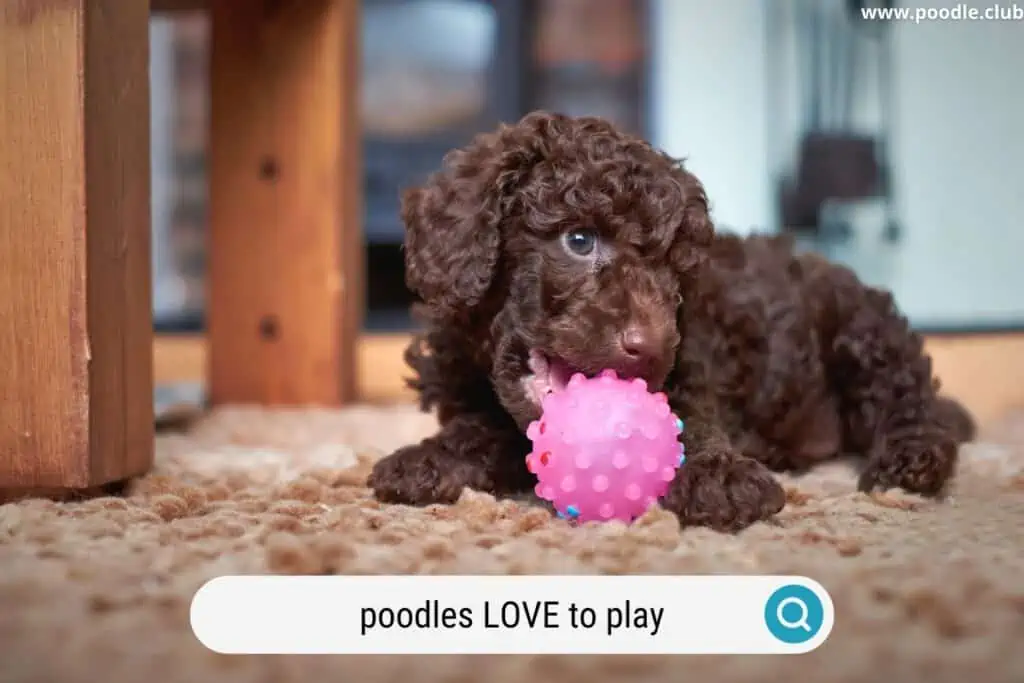
Step 6: Gradually Increase Time in the Crate
Once you start closing the crate’s door and leaving your Poodle puppy inside it, do so in small steps. I recommend keeping them in their crate while you’re home until they seem well adjusted.
Then, you can start to leave them in their crate when you leave the house. However, start by making a short trip to the grocery store. Then, work your way up to leaving your Poodle in their crate for longer periods.
Remember, your puppy’s bladder will strengthen as they age, so you leaving them in their crate for more time will start coinciding with when they can go longer periods without needing the restroom.
Understanding When Your Puppy Needs To Use the Bathroom
Some Poodle owners use crate training as means to potty train their puppy. Others plan to make crates a part of their Poodle’s life permanently.
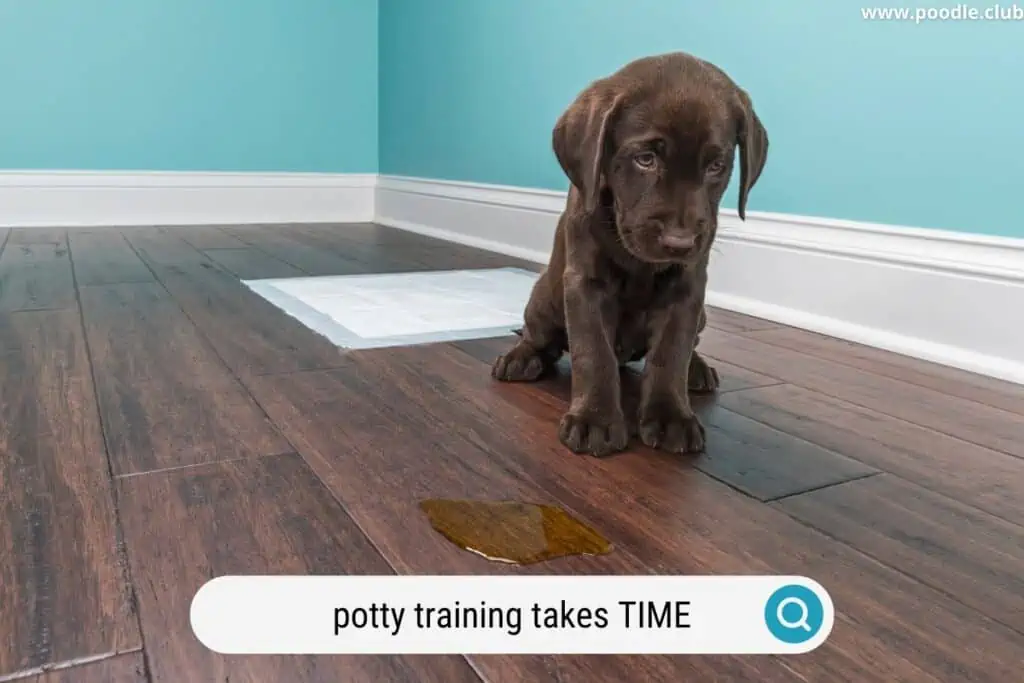
Regardless of your motive for crate training, both share the same truth: Puppies don’t like spending time in soiled areas, and therefore they’ll avoid going to the bathroom in their crate for as long as possible.
So, it’s your responsibility to take your Poodle out of its crate frequently for restroom breaks (not to mention that your puppy should never spend all day, every day in a crate).
Some of the most important times to take your Poodle outside to use the restroom include:
- When they wake up and before you go to bed
- After eating
- After drinking
- Whenever they wake up from naps
Furthermore, you should aim to take your puppy outside to go to the bathroom every two hours throughout the day, regardless of whether you’re keeping them in a crate.
Tips for Successfully Crate Training Your Poodle
Learning how to crate train a Poodle puppy is an essential step if you’re a new dog owner. However, there are some items you should keep in mind to make the crate training experience as fast and positive as possible.
Remove Your Puppy’s Collar
You should never lock your Poodle puppy in their crate with their collar on, let alone their leash. That’s because these items could get stuck in the door or elsewhere in the crate, causing stress and pain for your pet.
Feed Them in Their Crate
Feeding your Poodle in their crate is an excellent way to encourage them to spend time there. Just make sure they usually finish their meal, as it could get smelly and unsanitary for them if you leave uneaten food in their crate, especially if it’s wet food.
Never Yell at Your Poodle
Reprimanding your Poodle puppy for not going in their crate or having an accident is a sure-fire way to train them to fear it.
Experts agree that positive reinforcement training is the best approach for dogs. So, you should use treats and an upbeat tone when crate training your Poodle when they behave how you want them to instead of resorting to fear tactics when they do things you don’t.
Don’t Leave Them in Their Crate 24/7
Not only should you not leave your puppy in their crate all day, but you shouldn’t even leave them for half a day. Poodle puppies need to go outside to use the restroom every two hours, especially when they’re on the younger end of their puppy months.
But aside from bathroom needs, dog crates aren’t a place to leave your Poodle all the time. Poodle puppies and adults alike require lots of time spent with their owners and daily exercise.
Use a Word Associated With the Crate
You’re likely introducing your Poodle puppy to many new words like “sit” and “stay.” But consider using a word to associate them going into their kennel.
For example, “kennel time” or “go to your crate” are phrases your puppy will quickly pick up on and respond to with time.
Benefits of Poodle Puppy Crate Training
Crate training your Poodle as a puppy offers numerous benefits for both you and your pet, allowing you to cohabitate in a more positive, peaceful way. Below are some of the most significant advantages of crate training:
- Makes your puppy feel safe
- Keeps them on a schedule
- Prevents accidents and furniture chewing
- Helps them control their bowel and bladder
- Shows your puppy that you’re the alpha
- Reduces separation anxiety
- Makes it easier to travel in the car
Are You Ready To Crate Train Your Poodle Puppy?
From my experience, crate training Poodle puppies as young as possible takes a bit longer, but it also helps make the crate feel more like a natural part of their routine.
I know that learning how to crate train a Poodle puppy can sometimes feel difficult for the owner, given that you might feel guilty for keeping your pet locked in a cage. However, as we’ve seen, there are numerous benefits to crate training that’ll keep your Poodle happy in the long term.
So, don’t be surprised if your Poodle puppy soon starts visiting their crate on their own.




